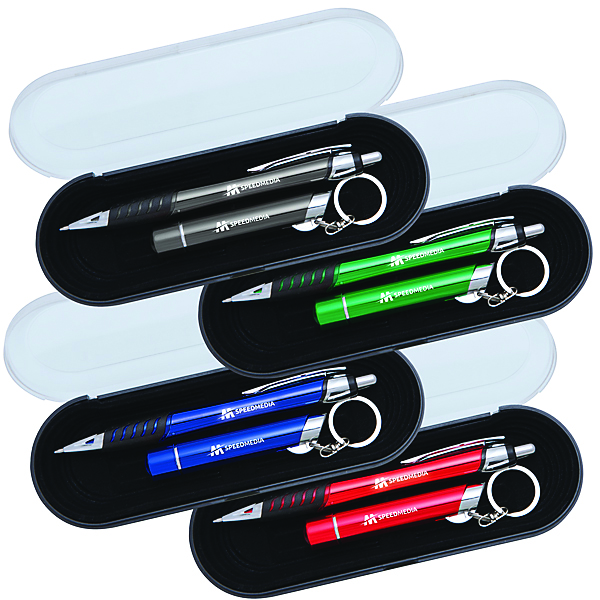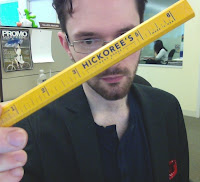No matter how reliable various electronic devices have become for accumulating and spreading information, writing instruments figure to retain the renown that thousands of years of use have granted them. Everyone still needs promotional pens, markers, pencils—you name it. They continue to make up a healthy chunk of industry sales. They’re not going anywhere.
Owing to the ubiquity of writing instruments, some observers might think that it requires little effort to sell them. But if distributors want to craft a career out of pen sales, there’s a few things they’ll need to know. Promo Marketing connected with Bill Mahre, president of ADG Promotional Products, Hugo, Minn.; and Amy LaPlante, trade marketing specialist, commercial and promo, for Pilot Pen, Jacksonville, Fla., to learn how a few practical steps can help distributors take their writing instruments sales to the next level.
1. What brands want
One could argue that no matter the product category, 2019 stands to be an incredible year for suppliers and distributors as long as they keep tapping into their audiences’ diverse promotional needs. While anyone could debate the likelihood of certain commodities enjoying 12 months of amazing sales, it is quite wise to refrain from thinking that writing instruments will suddenly become relics.
“Writing instruments are everywhere!” Mahre exclaimed when touching on the appeal of matching quality implements with end-users’ needs. “You cannot sign your credit card receipt, secure a purchase agreement, write on your calendar or doodle while bored in a meeting without a writing instrument.”
Mahre’s company has been offering promotional pens and other writing instruments for more than 30 years, with the loyal friends to paper becoming ADG’s second-most abundant items. Over that span, and because of that track record, the products have won acclaim for their affordability, quick turnaround and large decoration areas, a trio of positives that he believes his contemporaries can definitely emulate.
“The ultimate goal is to find a pen whose design and functionality suit the end-user’s intended purpose,” Mahre said of how distributors can become trusted writing instruments providers and mindful trend-followers. “More and more, we see end-users are willing to spend a little more to provide something that is a little nicer, but are not looking for $10 giveaways, so perceived value is critical. We always remind distributors to educate their clients on not letting a budget govern the choice of the pen they use, since if they are giving out writing instruments that are not conveying the right feel and message, it is a waste of their marketing dollars.”
As a writing instruments supplier and manufacturer, Pilot Pen has accumulated more than a century’s worth of experience. And LaPlante is proud to point out that the company has had major success in multiple pen categories. Deeming pens “one of the most economical vehicles to promote products, services, events or occasions,” she believes that a desire to be innovative must guide everyone’s presence in this thriving category. Such a vital element is easy to achieve, she surmised, by recognizing the connection between a product and a consumer’s reliance on it to express individuality.
“One trend that we’ve noticed is personal brand identity,” LaPlante said. “When people buy clothes, a car or a pen, they are adopting that brand identity and merging it with their own. They want to be associated with brands that enhance their own brand identity. Pens are very personal. Handwriting, like fingerprints, is unique. How you write and what you write with are an important expression of who you are.”

2. Why pens work
Having expressed enthusiasm in tying consumers’ needs to the vast amount of writing instruments options out there, Mahre and LaPlante also recognize—in returning to this feature’s introduction—that people could see the crowded writing instruments category as a deterrent to try to stand out among distributors selling the goods. But the two suppliers said not to worry. If you want to sell promotional pens and writing instruments, they advised venturing out into the public eye pens blazing.
“Seeing people’s—even veteran distributors’—faces light up as you hand them a pen with their name on it is incredibly enjoyable and highlights the power of this capability,” Mahre, in touching on ADG’s trade show success, said of how distributors could use that professional connection to inspire potential
buyers to invest in pens. “Our philosophy has always been to be cognizant that increasing the perceived value of any promotional item can be a tremendous way of increasing effectiveness and client satisfaction.”
“Unlike much of our competition, our sole focus is writing instruments,” LaPlante said. “We build, research, innovate and invest in it. It’s what we do, so we’re able to truly focus on understanding the category, our consumers and opportunities in the marketplace. Pilot thinks pens’ practicality, affordability and portability make them real favorites in the promotional products industry.”

3. Tips and tricks
According to our sources, since writing instruments are must-have items, they should also be must-sell products. Pilot Pen has devoted its entire existence to promoting the perks of the pen, but no matter if distributors have registered 100 years, three decades or two weeks as writing instruments purveyors, there’s always room to grow your sales. Mahre and LaPlante offered a few tips to keep in mind for kickstarting that process.
“Start the planning process with the end result in mind,” Mahre advised. “Identify your end-buyers’ recipients, and think about what they might appreciate and use. The initial reaction of the recipient isn’t usually how much the pen costs, but the pen’s quality, appearance and usability. First impressions are important, so using samples and virtuals can showcase ideas.
“The pen needs to suit the profile and convey the right feeling and message,” he continued. “Set aside personal opinions when selecting a writing instrument. For example, a distributor might not like a stylus on a pen, but when the pen is received by someone else, that added functionality could be the difference in it ending up in a junk drawer versus a desktop. Make sure to have a distribution plan, as knowing how the pens are being handed out will help with the price, style and quantity of product that your client will purchase.”
“Clients and suppliers appreciate thoughtful questions that help them find solutions,” LaPlante noted. “Understanding your client and their needs can help alleviate problems before they occur. A promotional pen that is given out at a toy store opening might not be the same pen you might want to offer to a luxury car sales retailer.
“Don’t be afraid to offer premium brands,” she added. “Most consumers appreciate choices, especially if you position them as offering good, better, best. Brand recognition might be more important to their end-user than previously thought once they see their options.”


